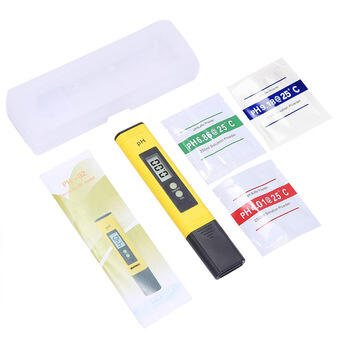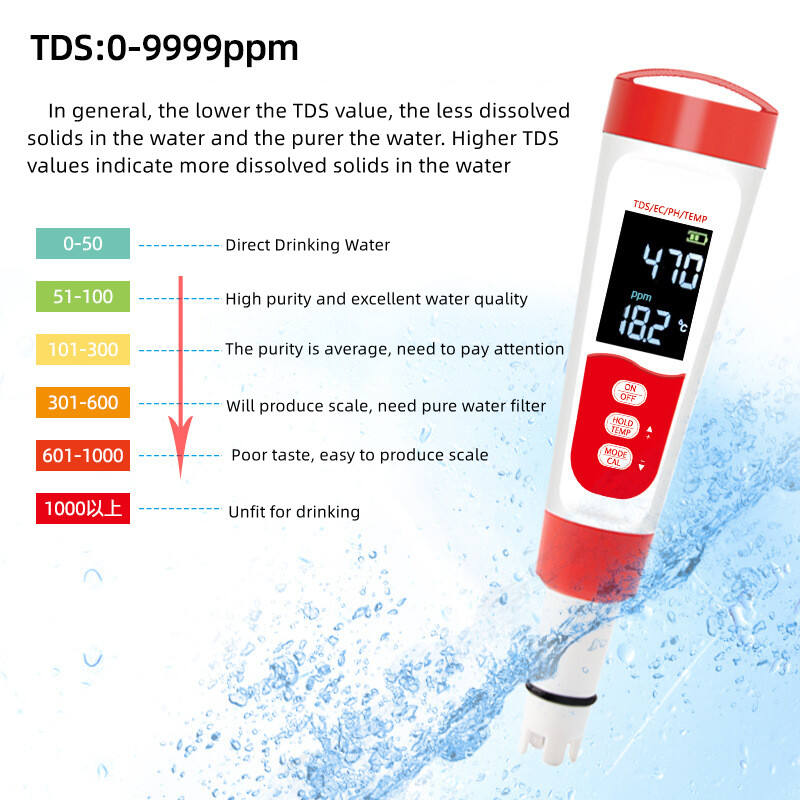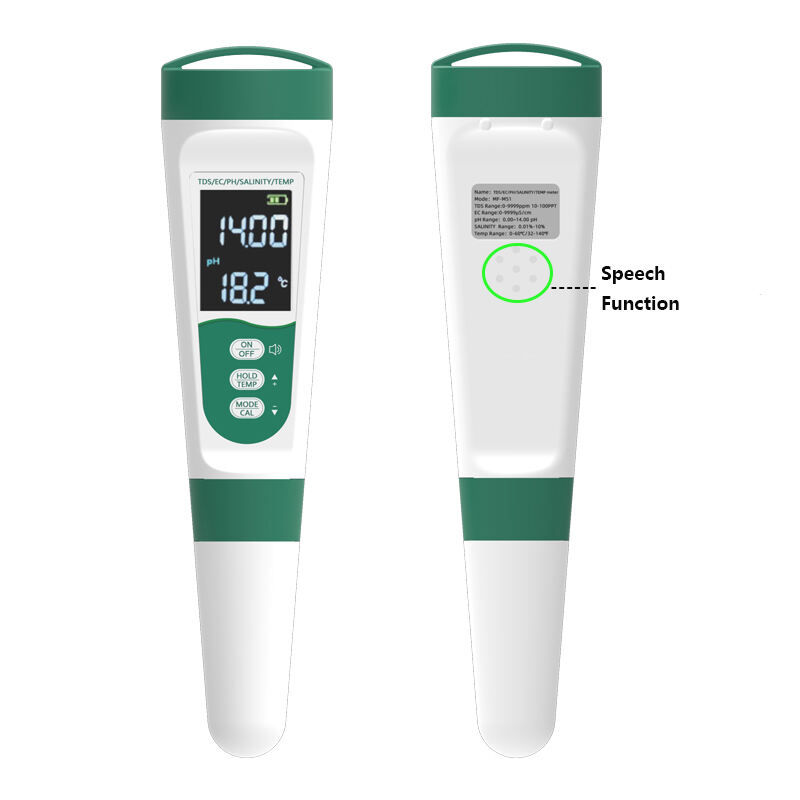hydroponics জন্য pH এবং TDS মিটার
হাইড্রোপনিক্সের জন্য pH এবং TDS মিটার একটি অত্যাবশ্যক উপকরণ, যা একই ডিভাইসে দুটি গুরুত্বপূর্ণ পরিমাপ ক্ষমতা একত্রিত করে। এই উন্নত যন্ত্র হাইড্রোপনিক্স সিস্টেমে আদর্শ পুষ্টির শর্তগুলি পরিদর্শন এবং রক্ষণাবেক্ষণে ফসল চাষীদের সাহায্য করে। pH মিটারের অংশটি পুষ্টি দ্রবণের অম্লতা বা ক্ষারতা পরিমাপ করে, 0 থেকে 14 পর্যন্ত স্কেলে কাজ করে, এবং অধিকাংশ হাইড্রোপনিক্স গাছপালা 5.5 থেকে 6.5 এর মধ্যে একটি পরিসরে বেশি জীবন্ত থাকে। TDS (Total Dissolved Solids) ফাংশনটি জলে দ্রবীভূত খনিজ এবং পুষ্টির ঘনত্ব পরিমাপ করে, সাধারণত প্রতি মিলিয়নের অংশ (ppm) বা বৈদ্যুতিক পরিবাহিতা (EC) এ প্রদর্শিত হয়। আধুনিক pH এবং TDS মিটারগুলি ডিজিটাল ডিসপ্লে, স্বয়ংক্রিয় তাপমাত্রা সংশোধন এবং জলপ্রতিরোধী ডিজাইন সহ স্নায়ুশীর্ষ পরিবেশে নির্ভরযোগ্যভাবে কাজ করতে সক্ষম। এই মিটারগুলি অনেক সময় স্বয়ংক্রিয় ক্যালিব্রেশনের ক্ষমতা সহ রয়েছে, যা সময়ের সাথে সঠিক পাঠ্য নিশ্চিত করে। এই যন্ত্রটি ফসল চাষীদের পুষ্টি দ্রবণের উপর নির্ভুল নিয়ন্ত্রণ বজায় রাখতে সাহায্য করে, পুষ্টি লকআউট এমন সমস্যাগুলি রোধ করে এবং গাছের আদর্শ বৃদ্ধি নিশ্চিত করে। উন্নত মডেলগুলিতে ডেটা লগিংয়ের ক্ষমতা অন্তর্ভুক্ত থাকতে পারে, যা ফসল চাষীদের সময়ের সাথে পরিবর্তন ট্র্যাক করতে এবং তাদের খাদ্য স্কেডিউলে জ্ঞানপূর্ণ পরিবর্তন করতে সাহায্য করে।


